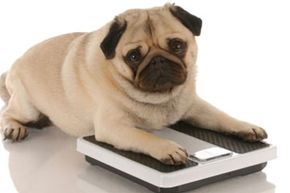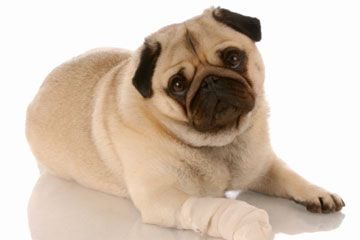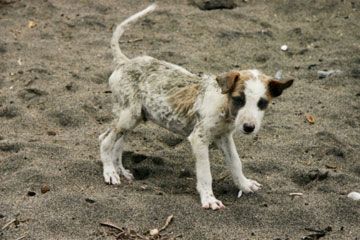We all know that carrying extra weight isn't healthy for humans; it contributes to such health problems as heart disease and diabetes. Did you know that the same goes for dogs? Obesity is the most common canine disease in the United States, occurring in up to 25 percent of the population. Chubby dogs are also more likely to develop other serious conditions like joint problems, infections, skin disease and even certain cancers.
Once a dog is overweight, it can be difficult to get him to lose. So the best thing for your dog is not to let him gain a lot of weight in the first place. Older dogs, with decreased activity levels and slower metabolisms, are more likely to put on weight. Some breeds are also predisposed to weight gain, such as Labrador retrievers. Keeping dogs healthy and trim works the same way as it does with people: They should only eat enough food to maintain the right body weight and get regular exercise.
Advertisement
To determine whether your dog is too heavy, stand over him and check for a waist -- a visible indentation behind his ribs. Then give him a hands-on test. Can you feel his ribs? They shouldn't be sticking out, but you should be able to find them easily through a layer of skin and muscle. If all you feel is rolls of fat, it's time to work with your veterinarian to develop a diet and exercise plan for your pet.
A veterinary checkup will ensure your dog doesn't have any health problems that could be contributing to his weight. It can also show whether he is healthy enough to increase his activity level and make changes to his diet. Your vet will advise you on the safest rate of weight loss; losing too much weight too fast can be dangerous. Monitor your dog's progress with weekly weigh-ins, either at the veterinarian's office or at home.
Read on to learn about the best way to feed and exercise your dog to get him healthy.
Advertisement



